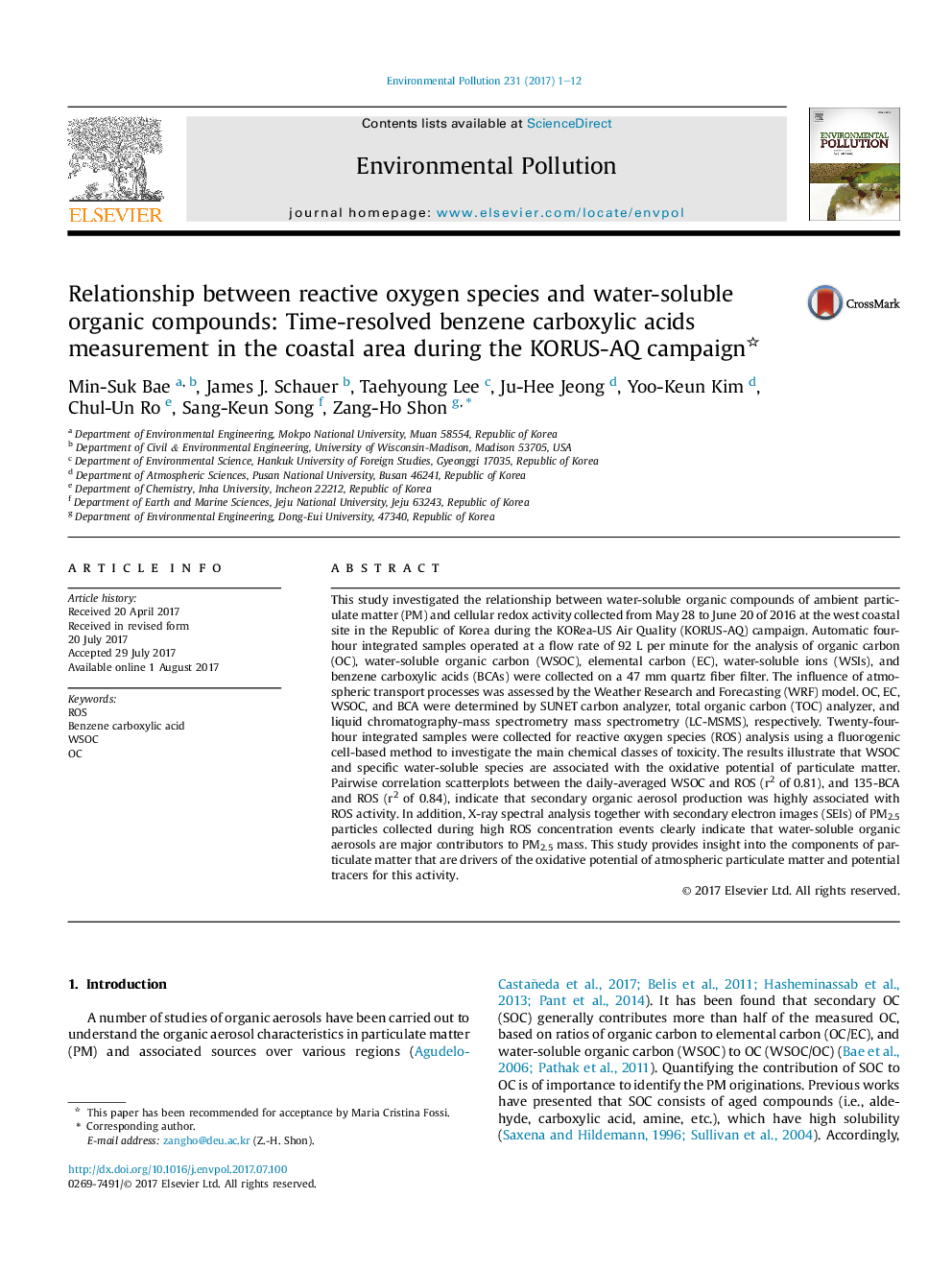| کد مقاله | کد نشریه | سال انتشار | مقاله انگلیسی | نسخه تمام متن |
|---|---|---|---|---|
| 5748544 | 1619142 | 2017 | 12 صفحه PDF | دانلود رایگان |

- Sensitive Analysis of Underivatized Benzene Carboxylic Acids using Time-resolved PM2.5 Sequence Sampling.
- Toxicity intensities between reactive oxygen species and water-soluble compounds.
- Good coefficients of determination between reactive oxygen species and carboxylic acids.
This study investigated the relationship between water-soluble organic compounds of ambient particulate matter (PM) and cellular redox activity collected from May 28 to June 20 of 2016Â at the west coastal site in the Republic of Korea during the KORea-US Air Quality (KORUS-AQ) campaign. Automatic four-hour integrated samples operated at a flow rate of 92Â L per minute for the analysis of organic carbon (OC), water-soluble organic carbon (WSOC), elemental carbon (EC), water-soluble ions (WSIs), and benzene carboxylic acids (BCAs) were collected on a 47Â mm quartz fiber filter. The influence of atmospheric transport processes was assessed by the Weather Research and Forecasting (WRF) model. OC, EC, WSOC, and BCA were determined by SUNET carbon analyzer, total organic carbon (TOC) analyzer, and liquid chromatography-mass spectrometry mass spectrometry (LC-MSMS), respectively. Twenty-four-hour integrated samples were collected for reactive oxygen species (ROS) analysis using a fluorogenic cell-based method to investigate the main chemical classes of toxicity. The results illustrate that WSOC and specific water-soluble species are associated with the oxidative potential of particulate matter. Pairwise correlation scatterplots between the daily-averaged WSOC and ROS (r2 of 0.81), and 135-BCA and ROS (r2 of 0.84), indicate that secondary organic aerosol production was highly associated with ROS activity. In addition, X-ray spectral analysis together with secondary electron images (SEIs) of PM2.5 particles collected during high ROS concentration events clearly indicate that water-soluble organic aerosols are major contributors to PM2.5 mass. This study provides insight into the components of particulate matter that are drivers of the oxidative potential of atmospheric particulate matter and potential tracers for this activity.
229
Journal: Environmental Pollution - Volume 231, Part 1, December 2017, Pages 1-12